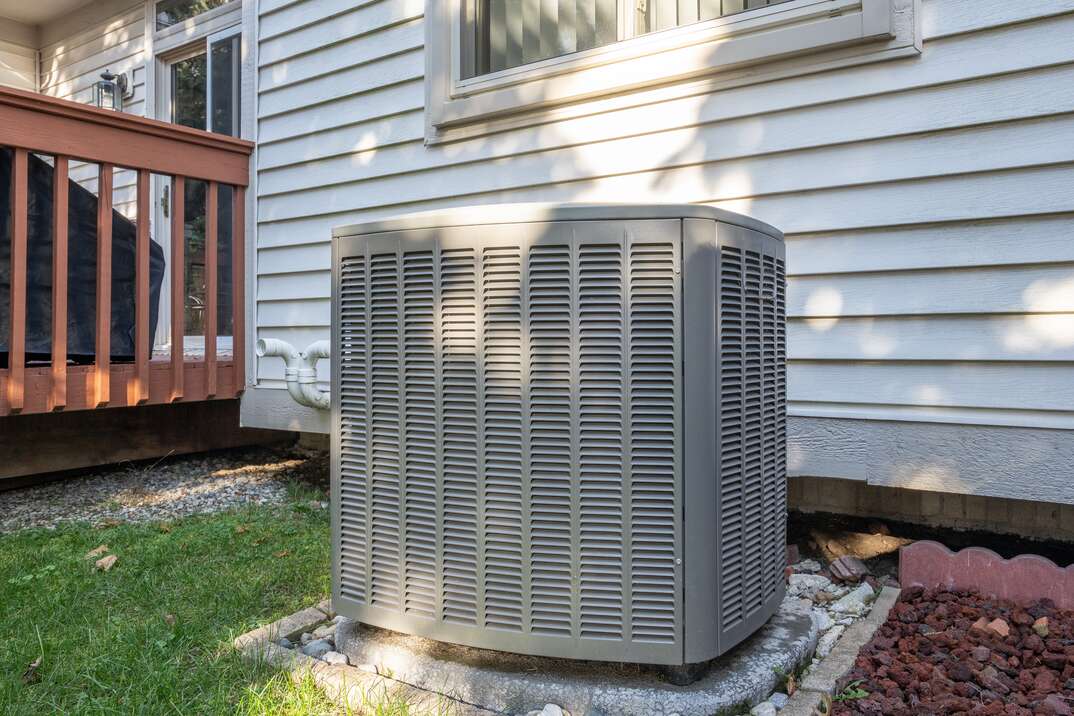How Your Ducts Work: Your HVAC System, Top to Bottom

Your HVAC (heating, ventilation and air conditioning) systems are responsible for keeping your home the perfect temperature year-round.
Read More Heating and Cooling Articles
Understanding Your HVAC System
You know adjusting your thermostat ensures ducts deliver warm or cool air to your property, but maybe you don’t know how your HVAC system does it.
Heat Pump
In winter, heat pumps extract heat from the outdoor air and deliver it indoors, while in summer, they reverse the process.
- The evaporator coil: During the heating cycle, the evaporator coil absorbs heat from the indoor air as it passes over its refrigerant-filled tubes. In cooling mode, it removes heat from the indoor air.
- Refrigerant circulation: In heating mode, the refrigerant evaporates into a gas as it absorbs heat from the indoor air at the evaporator coil. The compressor then compacts the refrigerant gas, increasing its temperature and pressure.
- The condenser coil: The high-pressure, high-temperature refrigerant gas flows through copper tubes to the outdoor unit, known as the condenser coil. In heating mode, the refrigerant releases the absorbed heat at the coil, warming the outdoor air. In cooling mode, the coil expels heat from the refrigerant to the outdoor air, causing it to become a liquid again.
- Air distribution: The air handler's blower circulates the conditioned air through your property’s ductwork. In heating mode, the warm air is distributed into living spaces to maintain a comfortable temperature. The process is identical for cooled air.
- Reversing valve: Your heat pump’s reversing valve switches between heating and cooling modes by changing the refrigerant’s flow when it’s activated. The valve sends hot refrigerant to the indoor evaporator coil in heating mode and to the outdoor condenser coil in cooling mode.
- Defrost cycle: In cold climates, frost can accumulate on the outdoor condenser coil during the heating cycle. Consequently, heat pumps employ the defrost cycle to prevent reduced efficiency.
- Energy efficiency: Heat pumps can produce up to three units of heating or cooling for every one unit of electricity consumed. This makes them an eco-friendly and cost-effective option.
More Related Articles:
- Hiring an HVAC Tech? Here are 5 Top Tips
- What's in My HVAC Technician's Van?
- HVAC Out? 5 Common Causes and Quick Fixes for Each
- How Much Does an HVAC Filter Cost?
- HVAC Upkeep Costs: Everything You Need to Know
Furnace
Furnaces heat homes through combustion by burning fuel.
- Combustion chamber: Natural gas or propane furnaces ignite the gas with a pilot light or electronic ignition. Oil furnaces use a burner and atomizer to spray and ignite oil.
- Heat exchanger: Heat generated from the combustion process is transferred to the heat exchanger. This critical safety component prevents combustion byproducts, such as carbon monoxide, from entering the indoor air.
- Air handling unit: Sometimes called the blower, it moves air through the furnace and into the ductwork. As warm air passes over the heat exchanger, it absorbs it and the air becomes hot or warm, depending on how long it’s exposed to the element.
- Distribution through ductwork: Heated air flows through the ductwork and is evenly distributed throughout the property through vents.
- Combustion ventilation: Furnaces require proper ventilation to optimize safety and efficiency. Exhaust gasses produced during combustion are vented outside through a flue or chimney, preventing them from entering indoor spaces.
- Energy sources: These include natural gas, oil and propane. Natural gas is often the most cost-effective and environmentally friendly.
- Efficiency and maintenance: A furnace’s Annual Fuel Utilization Efficiency (AFUE) rating indicates its effectiveness. Regular maintenance, such as cleaning, filter replacement and inspection, can help your furnace operate safely and efficiently.
Air Conditioner
Air conditioners cool properties by removing heat from indoor air and expelling it outdoors.
- Evaporator coil: As with a heat pump, warm indoor air is drawn over the evaporator coil, and as it passes, the coil's refrigerant extracts its heat.
- Refrigerant circulation: The refrigerant becomes gaseous as it absorbs heat at the evaporator coil. The compressor increases the pressure and temperature of the refrigerant gas.
- Condenser coil: The high-pressure, high-temperature refrigerant gas transfers to the outdoor unit's condenser coil. Here, the refrigerant releases the absorbed heat to the outdoor air, causing it to condense back into a liquid.
- Air distribution: After the heat exchange, the blower in the indoor unit circulates the now-cooled air through your property’s ductwork and into rooms via vents.
- Refrigerant recycling: A closed-loop system enables the same refrigerant to be continually cycled through the system, making it more environmentally friendly.
- Removing humidity: To help reduce indoor humidity, warm air passes over the evaporator coil, moisture condenses on the coil and is removed from the air.
- Energy efficiency: The Seasonal Energy Efficiency Ratio (SEER) is how an air conditioner’s energy efficiency is rated. Higher SEER ratings indicate better efficiency.
- Regular maintenance: Air conditioners require regular maintenance. Cleaning the coils, changing filters and ensuring proper refrigerant levels can ensure efficient operation.
Heat pumps, furnaces and air conditioners are essential components of modern HVAC systems. Now you know how each works, you should be able to make more informed choices for your property’s heating and cooling needs.
Elocal Editorial Content is for educational and entertainment purposes only. Editorial Content should not be used as a substitute for advice from a licensed professional in your state reviewing your issue. Systems, equipment, issues and circumstances vary. Follow the manufacturer's safety precautions. The opinions, beliefs and viewpoints expressed by the eLocal Editorial Team and other third-party content providers do not necessarily reflect the opinions, beliefs and viewpoints of eLocal or its affiliate companies. Use of the Blog is subject to the
Website Terms and Conditions.The eLocal Editorial Team operates independently of eLocal USA's marketing and sales decisions.



